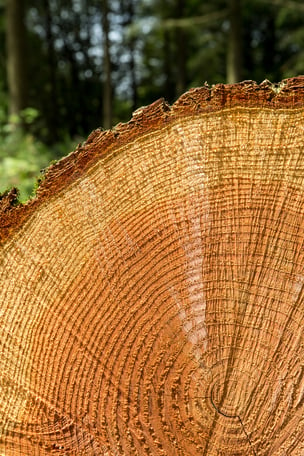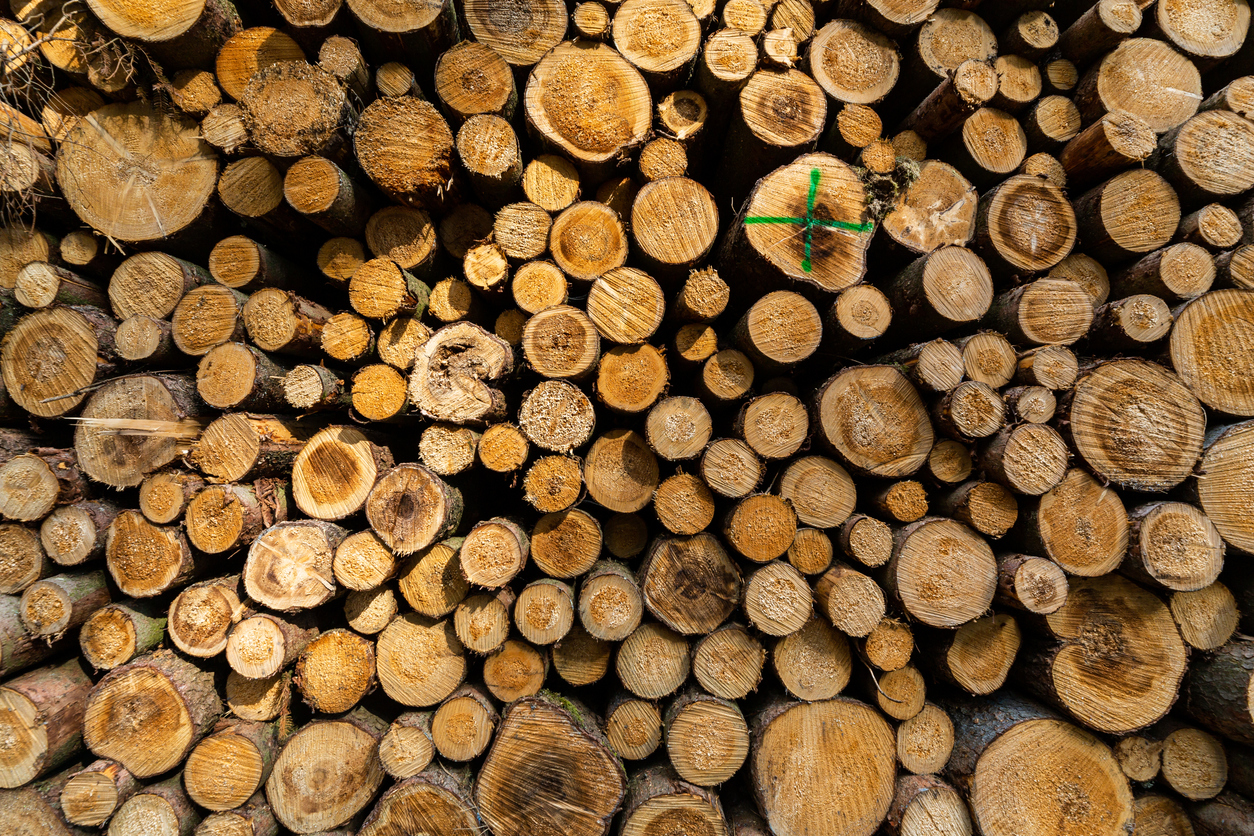Wood is a material with undeniable beauty and versatility. Wood is present in our homes mainly in the form of furniture, flooring, doors, cabinets and decoration, but also in the form of formwork, facades, beams, cladding and structures in single-family houses and high-rise buildings in many countries around the world. Spain is also one of them.
Are we concerned about where the wood we see in our homes, residences, corporate buildings, public buildings, and hotels comes from? In this article, Patricia Viñes, communication manager of FSC Spain, answers this question. FSC Spain is an organization that promotes the certification of forests and forest products in Spain, ensuring that high environmental, social, and economic standards are met.
When it comes to the question of where the wood we use comes from, it is not only important that its origin is legal and complies with European regulations, it must also come from responsibly managed forests and controlled sources. And from suppliers who demonstrate their environmental commitment through responsible sourcing.
When is wood sustainable?
When we talk about wood as a natural and renewable material, in order to use the label sustainable, wood has to come from responsible and controlled sources, where the long-term availability of the resource is ensured and where its ecosystems, biodiversity and the ecosystem services or environmental benefits that forests provide to society and that are essential for human life, such as water, soil, air quality and carbon storage, are protected. And where workers' rights are also respected and the interests of local communities are defended. The sustainability of the wood is ensured by certifying both the forests and the entire supply chain.
The use of wood in construction
 If the building industry foresees that the use of wood, as an ally of the sector's decarbonisation, will triple in the coming years, we are looking towards forests, making sustainable forest management more necessary than ever. Sustainability and traceability of materials must also be a mandatory requirement. In fact, the use of wood certified under FSC standards scores positively in obtaining sustainable certificates such as LEED, VERDE and BREEAM, among others.
If the building industry foresees that the use of wood, as an ally of the sector's decarbonisation, will triple in the coming years, we are looking towards forests, making sustainable forest management more necessary than ever. Sustainability and traceability of materials must also be a mandatory requirement. In fact, the use of wood certified under FSC standards scores positively in obtaining sustainable certificates such as LEED, VERDE and BREEAM, among others.
And, furthermore, when it comes to verifying the sustainable traceability of the wood used in a horizontal or vertical dwelling, in public or corporate buildings, whether new construction or rehabilitation projects, and in civil engineering works, the constructions can obtain the FSC project certification to guarantee to society that the wood used is certified and sustainable.
The Impulso Verde building, located in the multi-ecological neighbourhood of Lugo + Biodynamic, whose structure is made entirely of local Galician wood, is the first building in Spain to obtain the FSC certification for projects that accredits the sustainable traceability of all the wood used, more than 300 m³. Obtaining a certification that rigorously accredits the traceability of the wood used in a construction, whether in the structure or in its components, is a guarantee for society, which has the right to make properly informed real estate investments, where there is no doubt about the sustainable origin of the materials used, thereby avoiding reputational and operational risks for developers.
The FSC Certification, a forestry solution to a real problem
The FSC certification (Forest Stewardship Council), an international non-profit organization, is audited, verified and issued by independent third parties and represents a guarantee of economic, social and environmental sustainability with more than 150 million certified hectares and more than 55,000 Chain of Custody certified companies worldwide. A certification scheme understood as a forestry solution that on one hand protects forest areas, their ecosystems, and biodiversity, ensuring regeneration, but on the other hand is aware of the importance of providing economic incentives to owners to carry out responsible forest management and activities that preserve forest masses for future generations.
Profitability and conservation are two sides of the same coin. The FSC Certification allows owners to demonstrate that their forestry activity and forest uses are obtained responsibly and thereby achieve a fairer profitability in the commercialization of their products, in compensation for the conservation and protection efforts they make, since to adhere to the FSC scheme they must meet strict environmental and social standards.
For this reason, using FSC certified wood is synonymous with protecting our forest masses, because ultimately the ones we seek economic and social well-being for are the forest owners and the local rural communities, the true guardians responsible for protecting the forests for everyone. And this premise is also valid for tropical forests, because when FSC certified tropical wood is used, it promotes the quality of life and livelihood of local communities and Indigenous Peoples who depend on the forests for their living.
FSC_Ben%20Beech_184.jpg.jpg?width=600&height=400&name=2023_FSC%20APAC_Gifu%2c%20Japan_Higashishirakawa_(c)FSC_Ben%20Beech_184.jpg.jpg)
Certified wood with FSC
Certification of wood and types of certified wood
The FSC certification is a process based on international standards that, on one hand, verifies the sustainability of forest management at the source and includes within its scope the obtained yields, both timber and non-timber; and on the other hand, the traceability of forest products declared as FSC certified, through the Chain of Custody standards. The standards are audited and verified by independent certifying entities, who issue the FSC Certificates and conduct the annual follow-up audits.
The Chain of Custody is the route taken by products from the forest to the place where the product is sold with an FSC claim and/or finished and FSC labelled and includes each of the stages of sourcing, processing, trade and distribution, where progression to the next stage in the supply chain involves a change of ownership of the FSC product. In this way, it is guaranteed to the next link in the supply and production chain that the FSC certified material used comes from known, verified, and sustainable sources, and therefore the traceability and integrity in the value chain are guaranteed.
In this sense, FSC certified wood, in all its available formats and uses, from its first extraction and sawing, and then, in subsequent transformations, to obtain panels, or other finished products such as furniture, implies that the forest resources used, throughout the supply chain, come from responsibly managed and controlled sources. This means that compliance with a broad and strict set of environmental and social criteria has been verified, ensuring a sustainable use of forests.
We can find FSC certified wood in three types, identified with 3 FSC labels, which describe the origin and composition of the forest-based material used:
- FSC 100%indicates that all the wood used comes from FSC certified forests, audited under strict environmental and social criteria and is the highest seal of distinction among FSC certified products.
- FSC Mixed, identifies wood products in which wood from FSC certified forests, recycled wood and/or controlled wood have been mixed. FSC controlled wood is wood that does not come from certified forests, but must meet specific requirements, which are laid down in specific standards. The objective is to avoid the use of wood that comes from 'unacceptable' sources such as wood from illegal logging, from operations that violate traditional and/or civil rights, from genetically modified forests, from forests with high conservation values and/or that are threatened, and from the conversion of natural forests into plantations. Additionally, these standards have been recently revised in relation to the invasion of Ukraine, and they do not allow the use of wood originating from violent armed conflicts and/or that threaten national or regional security and/or are linked to military control.
- FSC Recycled indicates that the wood products have been verified to be made from 100% recycled material (either pre-consumer or post-consumer reclaimed material). FSC Recycled certified products reduce pressure on forests and promote the circular economy.
In conclusion, sustainable wood and FSC certification play a key role in the preservation of our forests and the promotion of responsible practices in the forest industry. The adoption of FSC certified wood products allows us to build a more sustainable future, where the conservation of natural resources and the well-being of local communities are priorities.


